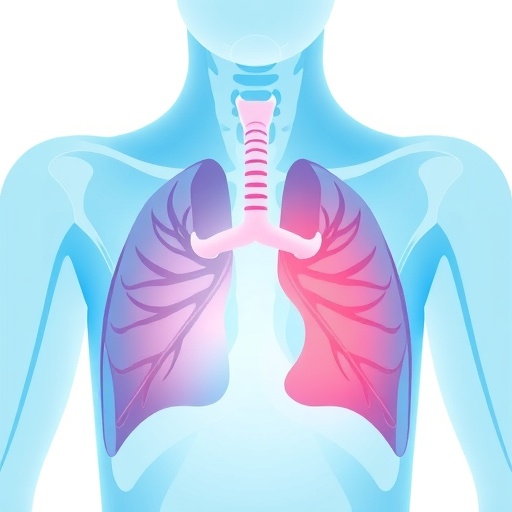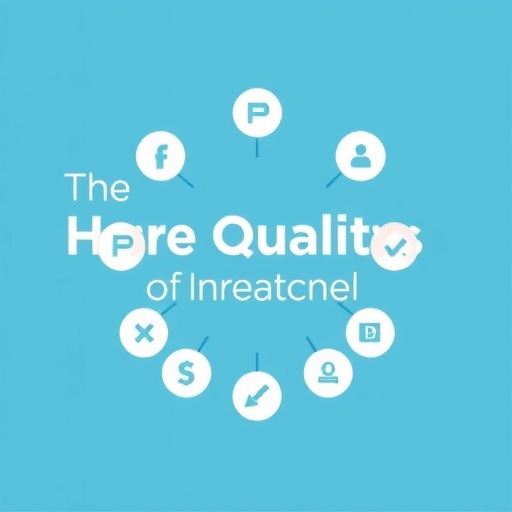In a groundbreaking multicenter study published in the World Journal of Pediatrics, researchers have shed new light on the prognosis and influencing factors of pulmonary embolism (PE) in children, a condition historically underexplored compared to its adult counterpart. The study, conducted across multiple pediatric hospitals, unearths vital insights that could reshape clinical approaches and improve survival rates in pediatric patients grappling with this critical vascular emergency. Pulmonary embolism, characterized by the obstruction of pulmonary arteries due to thrombotic material, poses significant diagnostic and therapeutic challenges in children, necessitating a comprehensive investigation into its outcomes and predisposing factors.
Pulmonary embolism, though less common in children than adults, remains a formidable cause of morbidity and mortality, often exacerbated by diagnostic delays and atypical symptomatology. The recent study meticulously analyzed clinical data from a large pediatric cohort, emphasizing the heterogeneity of presentation and the variability in risk factors, ranging from inherited thrombophilia to acquired prothrombotic states. Importantly, the research underpins the urgency of early detection protocols and tailored management strategies that account for pediatric-specific pathophysiological nuances, thereby enhancing prognostic stratification.
The multicenter framework of this investigation represents a significant advancement, pooling data from diverse geographic and demographic populations to enhance the statistical power and generalizability of findings. The inclusion criteria encompassed children diagnosed with radiologically confirmed pulmonary embolism, allowing for rigorous assessment of clinical trajectories and outcomes. The comprehensive data collection included parameters such as age, underlying medical conditions, laboratory markers, imaging findings, and therapeutic interventions, all pivotal in delineating the complex interplay influencing prognosis.
.adsslot_atYJCrEo3O{ width:728px !important; height:90px !important; }
@media (max-width:1199px) { .adsslot_atYJCrEo3O{ width:468px !important; height:60px !important; } }
@media (max-width:767px) { .adsslot_atYJCrEo3O{ width:320px !important; height:50px !important; } }
ADVERTISEMENT
One of the study’s most salient revelations pertains to the identification of key risk factors that exacerbate mortality and morbidity in pediatric PE. Congenital heart disease, malignancies, and recent surgical procedures emerged as prominent contributors, reinforcing the interconnected nature of systemic diseases and thromboembolic complications. Additionally, the presence of central venous catheters was strongly correlated with embolic events, underscoring the iatrogenic dimension of pediatric PE. These findings advocate for heightened vigilance and preventive measures in vulnerable subpopulations within pediatric care.
The prognosis of children afflicted with pulmonary embolism revealed critical age-dependent variations and revealed that neonatal and adolescent groups manifested distinct risk profiles and clinical outcomes. Younger children often exhibited subtle or nonspecific symptoms, leading to diagnostic challenges that delayed treatment initiation. Conversely, adolescents showed a pattern akin to adult PE with more pronounced clinical presentations. This age stratification highlights the necessity for age-adapted clinical vigilance and diagnostic algorithms that optimize early recognition and intervention.
Furthermore, the investigation probed into the efficacy and safety profiles of anticoagulant therapies in the pediatric population. The therapeutic landscape for PE treatment in children is complicated by the paucity of pediatric-specific pharmacokinetic and pharmacodynamic data, necessitating extrapolation from adult protocols. The study evaluates different anticoagulant regimens, including low molecular weight heparin and direct oral anticoagulants, documenting their outcomes and adverse effect spectra. The findings illuminate the balance between thrombosis resolution and hemorrhagic risk, guiding future refinement of pediatric pharmacotherapy.
Radiological imaging remains the cornerstone of PE diagnosis, and the study underscores the indispensable role of computed tomography pulmonary angiography (CTPA) alongside adjunct modalities like ventilation-perfusion scanning. The researchers discuss the challenges associated with radiation exposure and sedation risks in pediatric imaging, advocating for optimized protocols that minimize harm without compromising diagnostic accuracy. The integration of emerging imaging techniques and biomarkers represents a promising frontier to augment early detection and risk assessment.
In addition to clinical and imaging variables, the study explores genetic predispositions contributing to thrombotic tendencies in children. Inherited thrombophilias such as factor V Leiden mutation, prothrombin gene mutation, and deficiencies in natural anticoagulants (protein C, protein S, antithrombin) were scrutinized for their prognostic implications. The interplay between genetic susceptibility and environmental triggers offers a nuanced understanding of pathogenesis, steering personalized medicine approaches in pediatric thrombosis management.
Infection-driven hypercoagulability emerged as a notable factor influencing pulmonary embolism outcomes. The research delineates how systemic infections or inflammatory states potentiate endothelial dysfunction, coagulation cascade activation, and subsequent thrombus formation. Particularly in the pediatric context, viral infections common in childhood may act as catalysts, amplifying the risk of embolic events. These observations necessitate integrated strategies encompassing infection control and thromboprophylaxis in at-risk patients.
The multicenter study also highlights the psychosocial dimensions of pulmonary embolism in children, addressing the psychological burden on patients and families. The chronicity of anticoagulant therapy, the threat of recurrence, and the potential for long-term sequelae such as chronic thromboembolic pulmonary hypertension impose considerable stressors. The authors advocate for multidisciplinary care models incorporating psychological support to ameliorate these challenges and improve overall quality of life during and post-treatment.
Emerging from this influential research is a call for heightened awareness and education among healthcare providers. Given the relative rarity and complex presentation of pediatric PE, standardizing diagnostic and therapeutic guidelines as well as continuing medical education are crucial. The study endorses the development of pediatric-specific risk assessment tools and decision-support algorithms to streamline clinical workflows and enhance patient safety.
In terms of health policy, the findings propel discussions on resource allocation for pediatric vascular disorders. Investing in specialized pediatric thrombosis units, funding for research on anticoagulant therapies tailored to children, and protocols for preventive care in high-risk groups are imperative strategies. The study’s implications resonate beyond clinical care into realms of healthcare infrastructure and policy-driven improvements.
Importantly, the research offers a foundational framework for future investigations, identifying gaps such as the need for longitudinal studies tracking long-term outcomes and recurrence rates. The authors propose multicenter collaborative networks to pool data dynamically and facilitate real-time research, optimizing evidence-based clinical guidelines. This approach aligns with the global momentum toward precision medicine and interdisciplinary collaboration in pediatric healthcare.
As pediatric pulmonary embolism continues to gain recognition as a distinct clinical entity, this landmark study galvanizes the medical community to refine understanding, improve diagnostics, and innovate treatment paradigms. The convergence of clinical acumen, advanced imaging, genetic profiling, and therapeutic innovations heralds a new era in combating pediatric thromboembolic diseases, ultimately enhancing survival and quality of life for affected children.
In summary, this extensive multicenter research redefines the landscape of pediatric pulmonary embolism by elucidating critical prognostic factors and therapeutic considerations. Its comprehensive scope, detailed analyses, and practical recommendations lay the groundwork for transforming pediatric vascular care. The urgency in translating these findings into clinical practice reflects a broader commitment to safeguarding the health and future of children worldwide against this life-threatening yet curable condition.
Subject of Research: Pulmonary embolism prognosis and influencing factors in pediatric patients.
Article Title: Prognosis and influencing factors of pulmonary embolism in children: a multicenter study.
Article References:
Lin, ZL., Zeng, SH., Liu, FQ. et al. Prognosis and influencing factors of pulmonary embolism in children: a multicenter study. World J Pediatr 21, 566–574 (2025). https://doi.org/10.1007/s12519-025-00929-z
Image Credits: AI Generated
DOI: June 2025
Tags: acquired prothrombotic statesdiagnostic challenges in pediatric PEearly detection of pulmonary embolismimproving survival rates in pediatric patientsinfluencing factors of PE in childreninherited thrombophilia in childrenmulticenter pediatric studypediatric specific risk factorspediatric vascular emergenciesprognosis of pulmonary embolismPulmonary embolism in childrenthrombotic material obstruction in children





